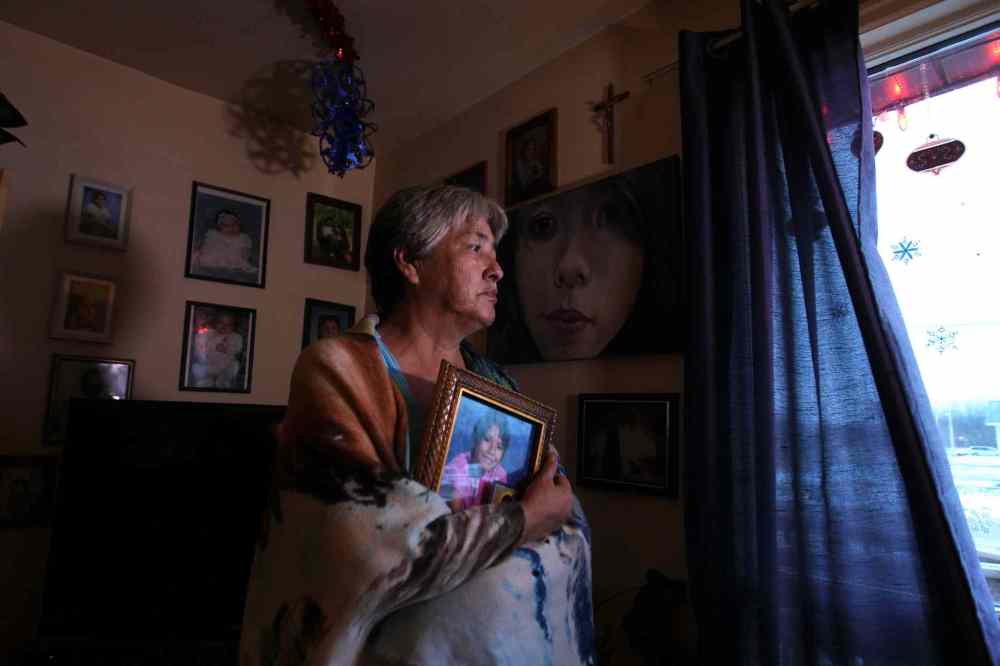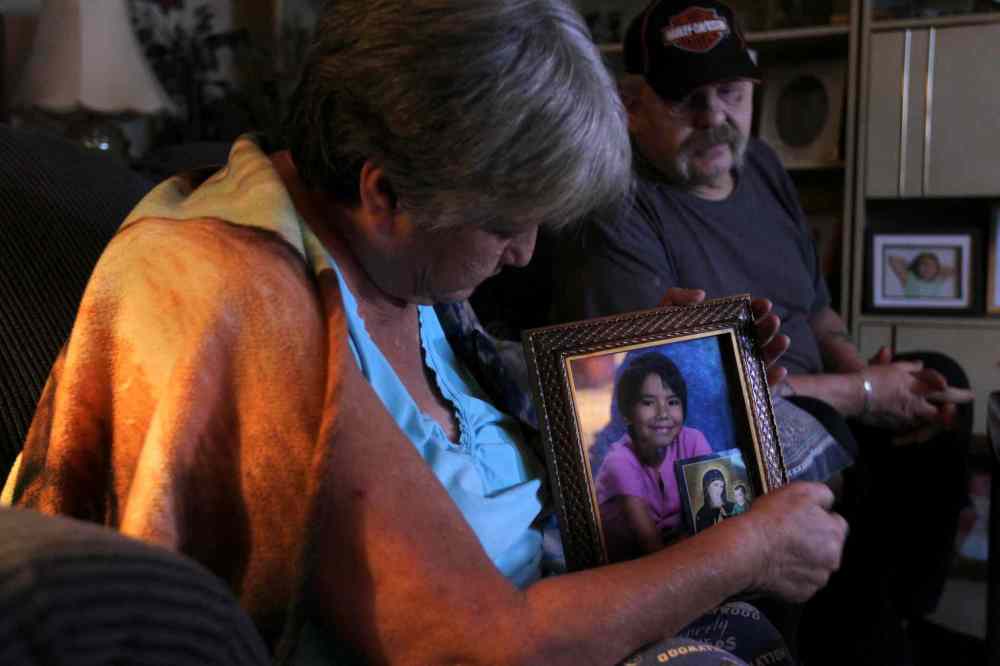Tina’s death has a new legacy of hope
Advertisement
Read this article for free:
or
Already have an account? Log in here »
To continue reading, please subscribe:
Monthly Digital Subscription
$1 per week for 24 weeks*
- Enjoy unlimited reading on winnipegfreepress.com
- Read the E-Edition, our digital replica newspaper
- Access News Break, our award-winning app
- Play interactive puzzles
*Billed as $4.00 plus GST every four weeks. After 24 weeks, price increases to the regular rate of $19.00 plus GST every four weeks. Offer available to new and qualified returning subscribers only. Cancel any time.
Monthly Digital Subscription
$4.75/week*
- Enjoy unlimited reading on winnipegfreepress.com
- Read the E-Edition, our digital replica newspaper
- Access News Break, our award-winning app
- Play interactive puzzles
*Billed as $19 plus GST every four weeks. Cancel any time.
To continue reading, please subscribe:
Add Free Press access to your Brandon Sun subscription for only an additional
$1 for the first 4 weeks*
*Your next subscription payment will increase by $1.00 and you will be charged $16.99 plus GST for four weeks. After four weeks, your payment will increase to $23.99 plus GST every four weeks.
Read unlimited articles for free today:
or
Already have an account? Log in here »
Hey there, time traveller!
This article was published 11/12/2015 (3591 days ago), so information in it may no longer be current.
SAGKEENG FIRST NATION — When Thelma Favel was handed a smartphone showing the picture of the man accused of killing the girl she called “my baby,” she couldn’t bear to touch it and flinched.
Favel had never seen an image of 53-year-old Raymond Cormier until Friday. Until then, she had imagined the accused killer of the child she had raised from age four as a monster.
“I never knew evil until I looked at that picture,” Favel said at her home in Sagkeeng, about 145 kilometres northeast of Winnipeg. “I can only imagine what my baby was thinking.”
Tina Fontaine had become the face of missing and murdered indigenous women in Canada, The body of the 15-year-old was discovered in the Red River on Aug. 17, 2014, wrapped in a garbage bag.
“The murder of this child, and let’s not forget she was a child, has shocked and outraged this community and resonated across our nation,” Winnipeg Police Service Deputy Chief Danny Symth said at a Friday news conference outlining Cormier’s arrest.

After decades in which families of hundreds of missing indigenous women tried in vain to gain national or even local attention — their public protests fell on deaf ears — the death of Tina triggered a national outcry. Her image came to symbolize the nearly 1,200 victims over the past three decades.
It was the image of Tina that helped galvanize public and political opinion, pushing the calls for a national inquiry. Cormier’s arrest happened the same week the Liberal government launched the first phase of an inquiry. That’s part of Tina’s legacy.
Now there is also another image: the police photo of Cormier — a lifelong drifter who has 94 convictions. Weeks after Tina’s body was found, he was arrested for threatening security guards with a screwdriver at a Safeway store on Osborne Street while attempting to steal meat.
Cormier’s criminal record was so extensive, one Crown attorney last year remarked that, “Mr. Cormier is doing life on the instalment plan.”
The only reason Cormier remained in Manitoba was because of a parole provision preventing him from leaving the province after he was let go from prison.
So it was, police said Friday, that the career criminal and drifter became “an acquaintance” of a 15-year-old runaway from Sagkeeng First Nation, who just three years earlier had lost her father to a violent death.
Tina had been in and out of foster care over the past year of her life. She had run away from foster parents in Winnipeg three times and went missing Aug. 8, 2014.
Police said Friday Tina and Cormier had met several times in a residence on the east side of Winnipeg.
“He murdered her on their last encounter,” Smyth alleged Friday.
Police described Fontaine as “an exploited child.”
“She was a very confused kid, looking for something she couldn’t find,” said Sgt. John O’Donovan, a homicide detective.
But police gave no new details Friday about the cause of the teenager’s death or the motive for the slaying.
Now, perhaps, after the horror of her death, Tina’s short life will have a positive effect: the possibility that the hundreds of cold cases involving missing and slain indigenous women are not dead ends, that families who for years have been standing at vigils holding pictures of their lost family members can have a flicker of hope.
“There is no magic… we followed the evidence,” O’Donovan said, adding that a series of tips to police helped advance the investigation. “We can solve all the murders if people come to us with evidence.”
Nahanni Fontaine, the special adviser on indigenous women’s issues for the Manitoba government, said she received a text message of the arrest Friday afternoon while in a sharing circle with federal cabinet ministers and families of missing and murdered indigenous women in Ottawa. “Everybody just gasped,” Fontaine said.
“One case in many ways is representative of all the cases. This genuinely gives some sense of hope to families that cases can be solved.”
But even an arrest — even staring at the face of the man accused of the murder — is not a guarantee of solace. Ask Thelma Favel, who cringed in tears at the sight of the photo.
Favel said she was prepared to forgive.
“I’ll have to,” she said. “If you don’t, it just eats at you. I can’t say I’ll forgive him right now, but I don’t want to end up like him, with so much hate for someone. But right now, my emotions are too raw.”
Tina’s immediate family has already been told it may take two or three years before the case goes to court. “But that’s two years that he won’t be free anymore,” Favel said. “He’ll be locked up.”
()imageTag)Not only does Tina’s great aunt plan to attend the trial, she’s already on page three of her victim impact statement.
“I want him to know what he did to our family. I almost lost my faith in humanity, really.
“They said she was a lost little girl. I want him to know that she had a family. She was loved. And he just stole that away from us.”
However, Favel believes in her heart that Tina is somewhere, “ happy and rejoicing”.
“She’s not lost anymore. She’s able to really, really rest.”
— with files from Mike McIntyre and Alexandra Paul


Randy Turner
Reporter
Randy Turner spent much of his journalistic career on the road. A lot of roads. Dirt roads, snow-packed roads, U.S. interstates and foreign highways. In other words, he got a lot of kilometres on the odometer, if you know what we mean.
Our newsroom depends on a growing audience of readers to power our journalism. If you are not a paid reader, please consider becoming a subscriber.
Our newsroom depends on its audience of readers to power our journalism. Thank you for your support.
History
Updated on Friday, December 11, 2015 12:18 PM CST: Adds comments from Chief Derrick Henderson.
Updated on Friday, December 11, 2015 12:38 PM CST: Adds comments from North Wilson, Bittern and Fontaine.
Updated on Friday, December 11, 2015 1:02 PM CST: Adds video.
Updated on Friday, December 11, 2015 1:19 PM CST: Updates with man from new Brunswick charged.
Updated on Friday, December 11, 2015 2:34 PM CST: Writethru.
Updated on Friday, December 11, 2015 3:15 PM CST: Adds images.
Updated on Friday, December 11, 2015 3:37 PM CST: Adds comments from children's advocate.
Updated on Friday, December 11, 2015 7:47 PM CST: Update with comments from Thelma Favel.








